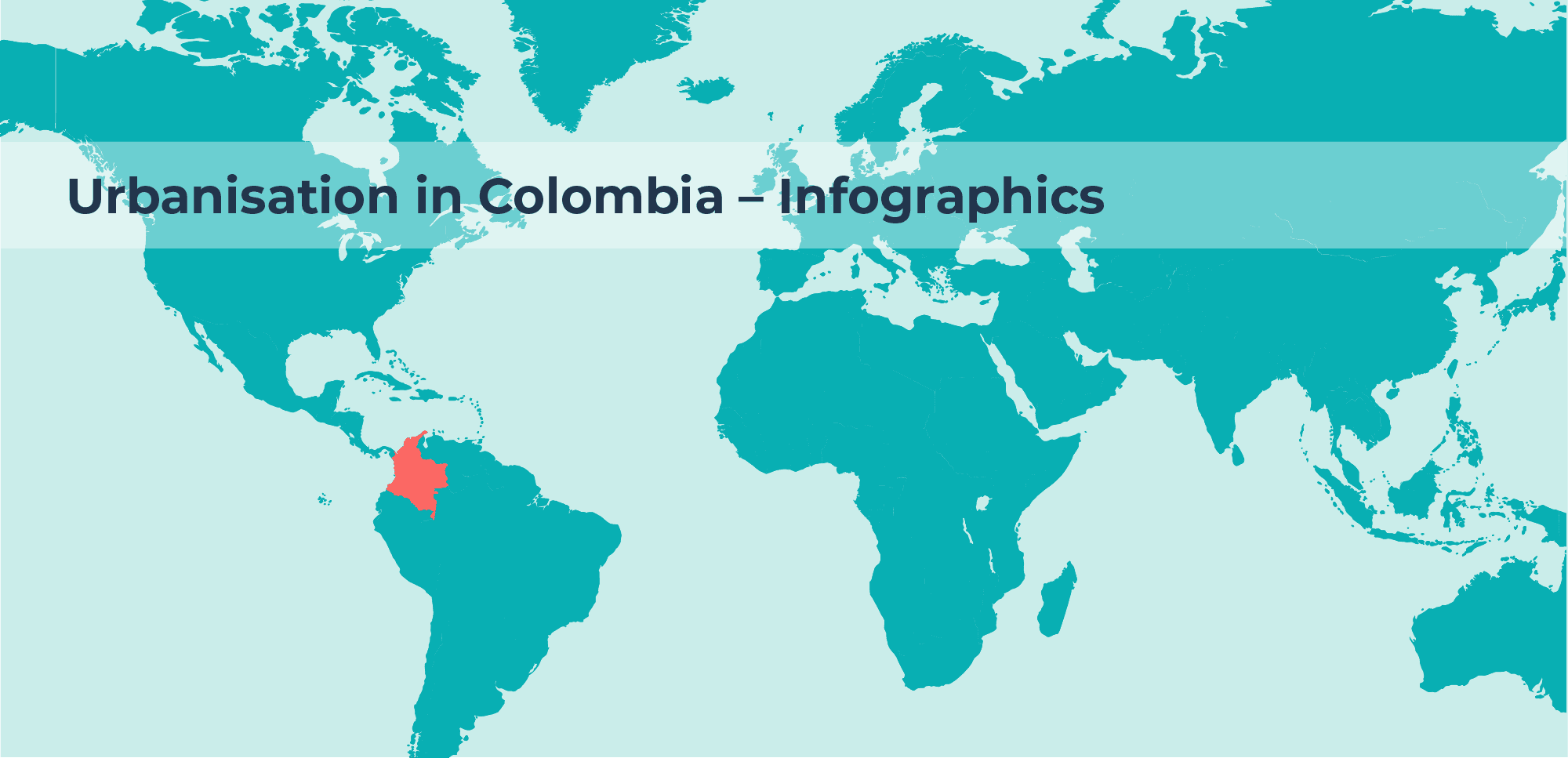Infographics: Urbanisation and Urban Development in Colombia
URBANET’s latest country focus on Colombia invites our readers to learn about the country’s urban and demographic development. Traditionally starting off with a set of infographics, we offer you facts and figures about urbanisation in Colombia, which is already increasing rapidly and projected to rise even further in the following 25 years.
Urban and Rural Population
Colombia’s rural population has been slowly increasing until 1980, followed by a period of stagnation that lasted about thirty years. Since 2010, less and less people have been living in rural areas. While Colombia’s rural population is projected to decline gradually until 2050, the country’s urban population has increased tremendously from 38.3 per cent in 1950 to 75.5 per cent in 2018. This means Colombia’s urban population almost doubled within this period. The year 1963 marked the intersection point where the urban population started to outnumber the rural population.
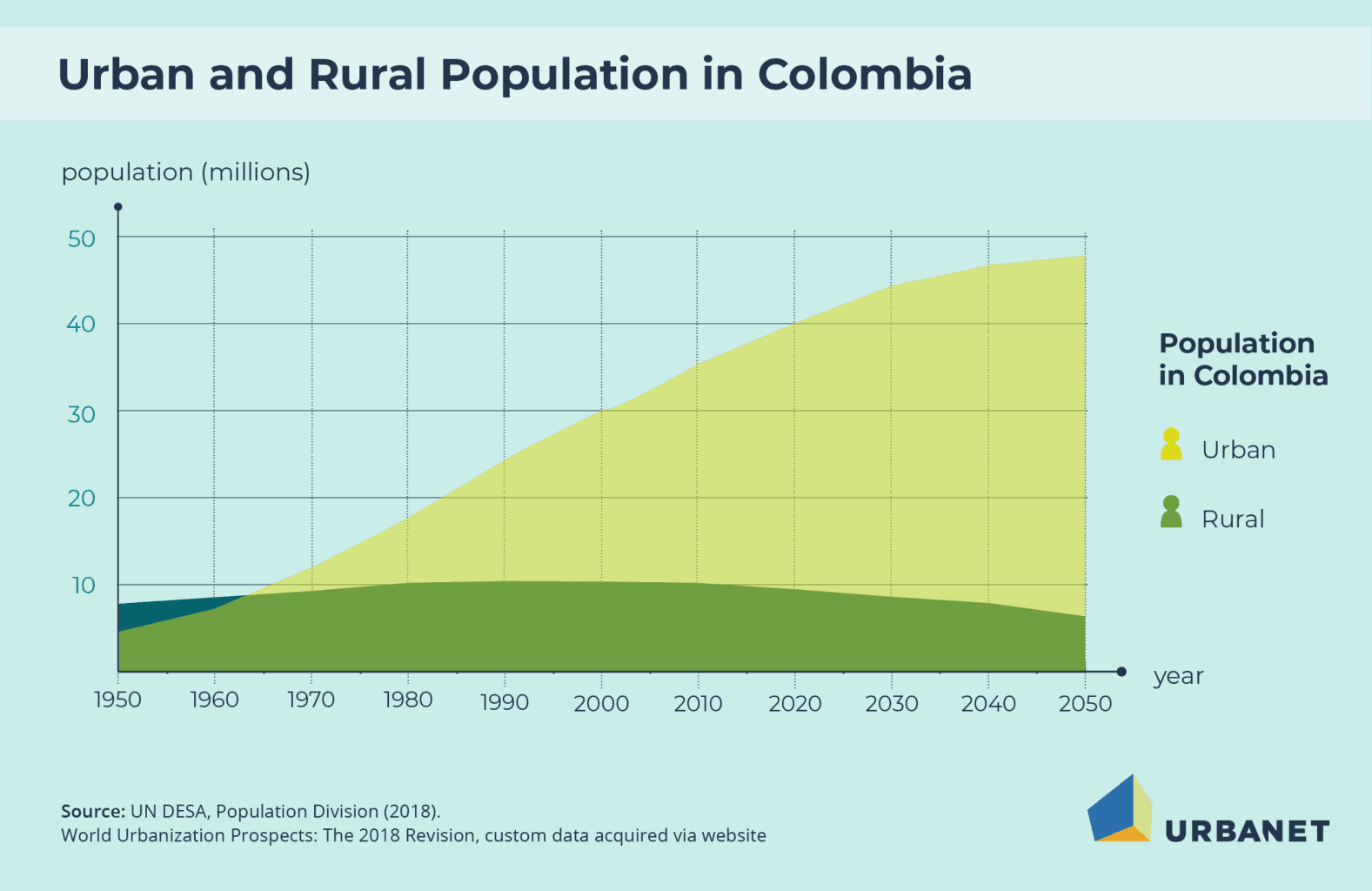
Urbanisation in Colombia – Urban and Rural Population | Colombia Infographics © GIZ
Size of Settlements
Colombia comprises 18 metropolitan areas. Colombia’s capital, Bogotá, marks the country’s largest city accounting for more than eleven million inhabitants. Twelve cities currently consist of less than a million inhabitants. The population of five cities – Medellín, Cali, Barranquilla, Bucaramanga, and Cartagena – ranges from one to four million people living there.
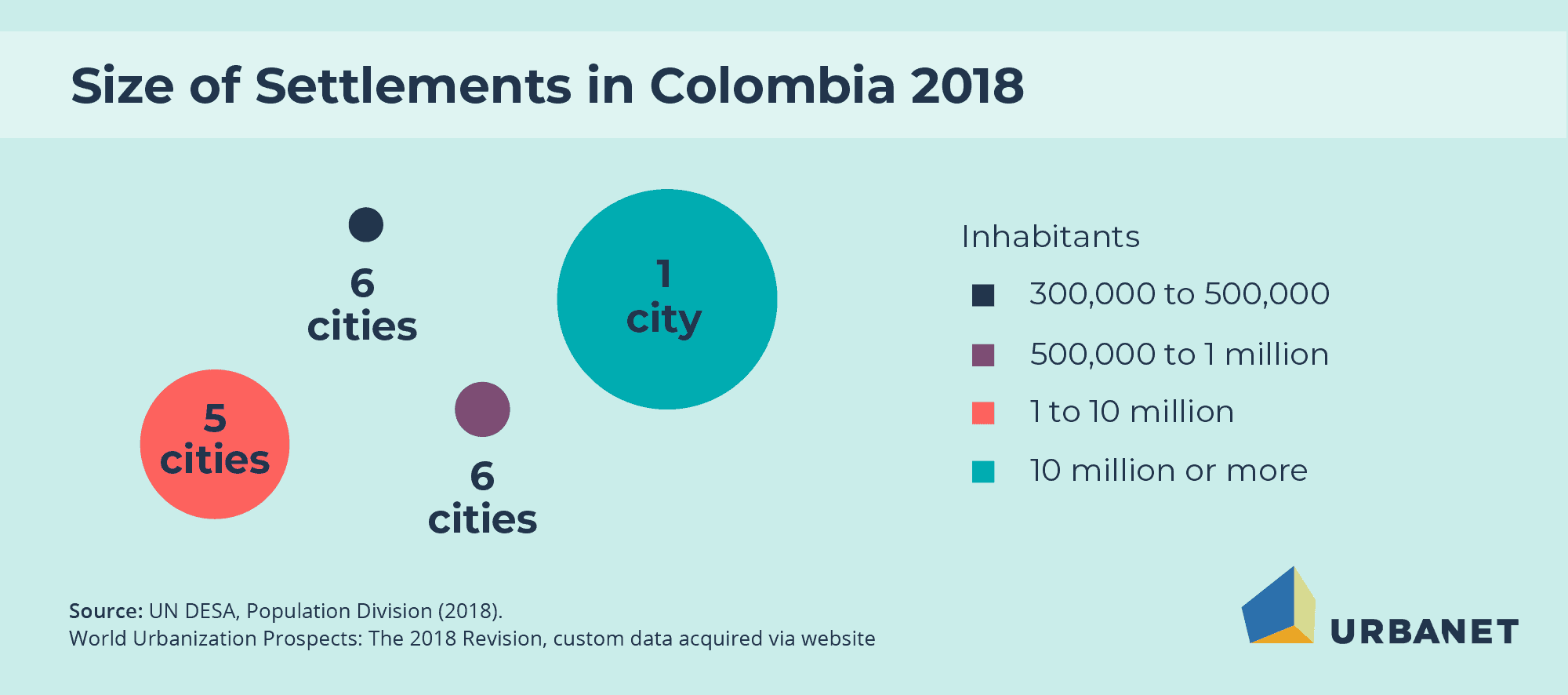
Urbanisation in Colombia – Size of Settlements | Colombia Infographics © GIZ
The 6 Largest Urban Agglomerations in Colombia
The Colombian capital of Bogotá is the country’s largest urban agglomeration. Its current number of eleven million inhabitants is projected to increase significantly to almost 13 million people in 2035. Colombia’s second-largest city is Medellín, housing approximately four million people at the moment. Another 500.000 inhabitants will presumably be living in the city by 2035. Cali is Colombia’s third-largest city. Its population will pass the three million mark by 2030. The population figures in Barranquilla, Bucaramanga, and Cartagena are equally on the rise.
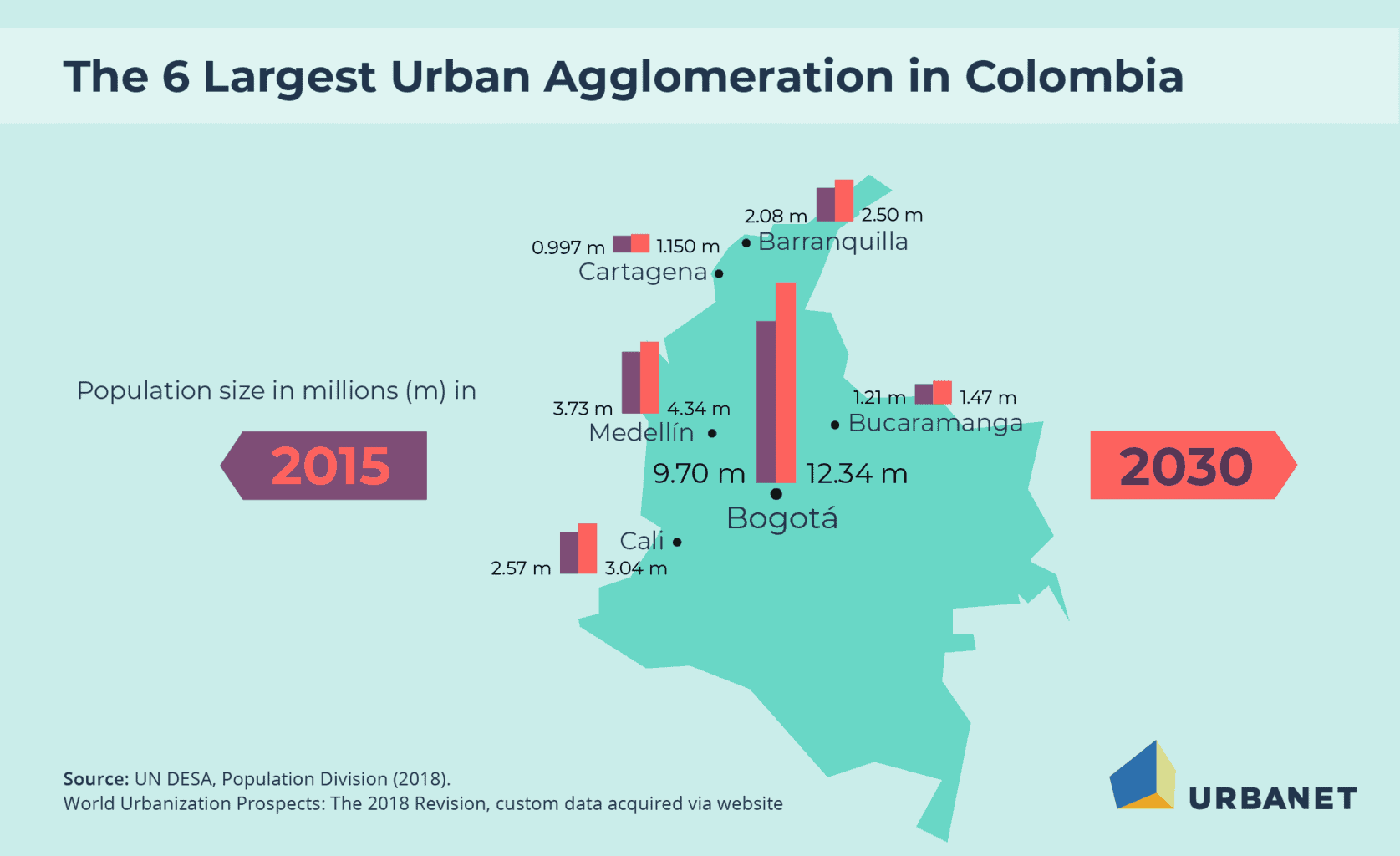
Urbanisation in Colombia – Largest Cities in Colombia | Colombia Infographics © GIZ
Urbanisation in Colombia – Key Figures
Urban population surge is a major issue in Colombia: An increase of 37.2 per cent led to almost twice as many people living in urban areas now. This can partly be traced back to Colombia’s 60-year-long armed conflict: As a result of the struggle between the government of Colombia, far-right paramilitary groups, and far-left guerrilla groups – fighting each other to increase their influence in Colombian territory –, around nine million people have been registered as victims who suffered from forced internal displacement. Most of these displaced persons sought refuge in large cities, thus, adding to the country’s rapid urbanisation. Currently, around five million people in Colombian cities live in informal settlements – which constitute a quarter of the country’s urban sphere – and around 60 per cent of workers in Colombia work in the informal sector. This accounts for nearly half of the labour force in major cities. In addition to the vulnerability caused by the informal settlement scale as well as the high informal employment rate, housing has become increasingly unaffordable for Colombians. Between 2005 and 2020, real house prices in Colombia more than doubled, which outpaced household income growth significantly.
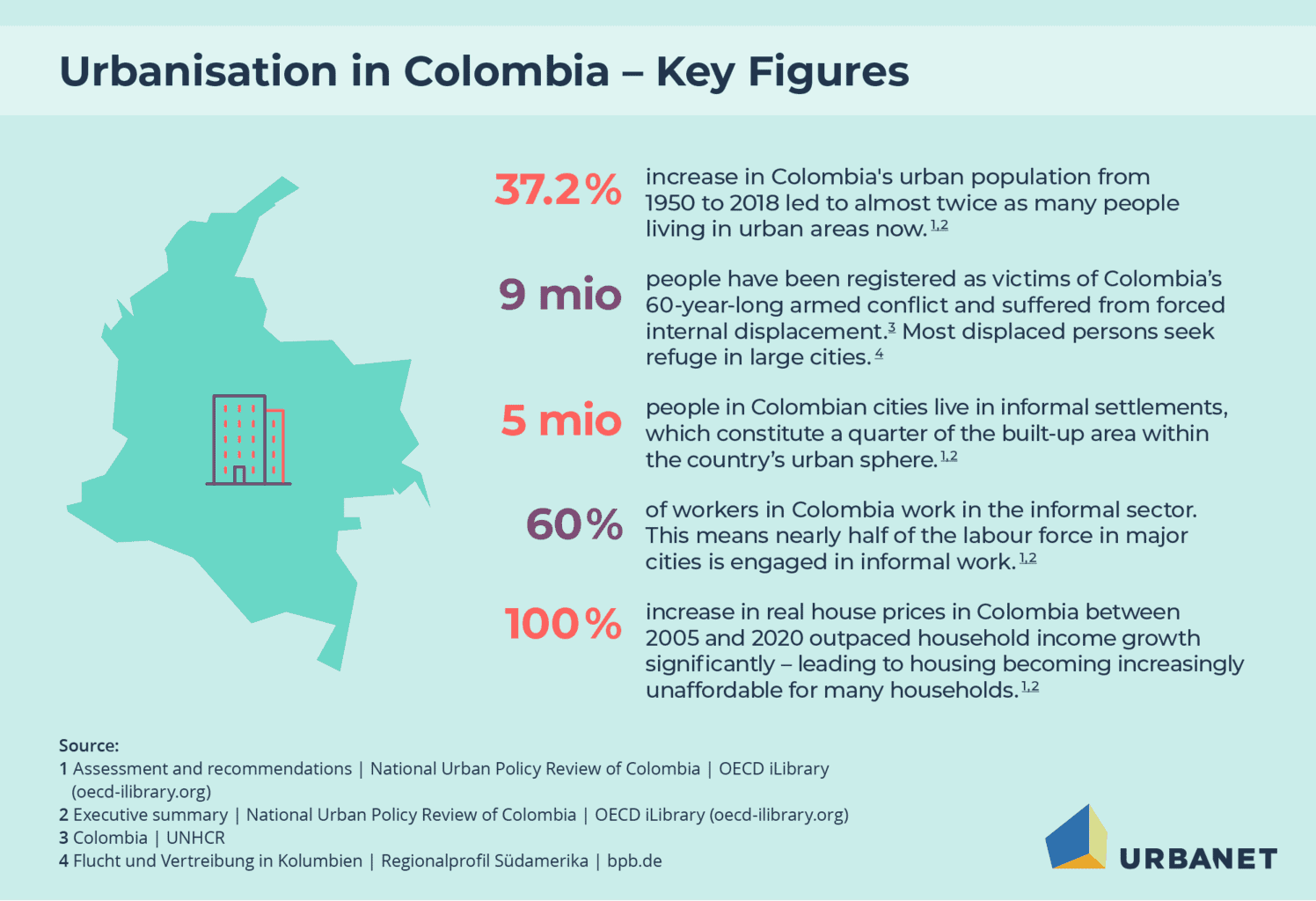
Urbanisation in Colombia – Key Figures | Colombia Infographics © GIZ
